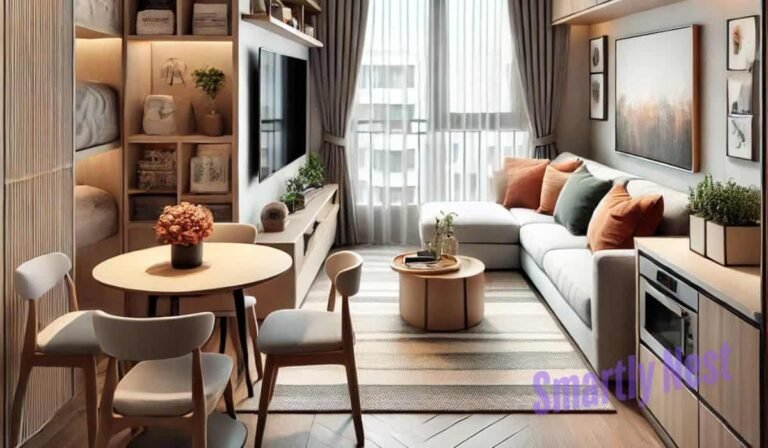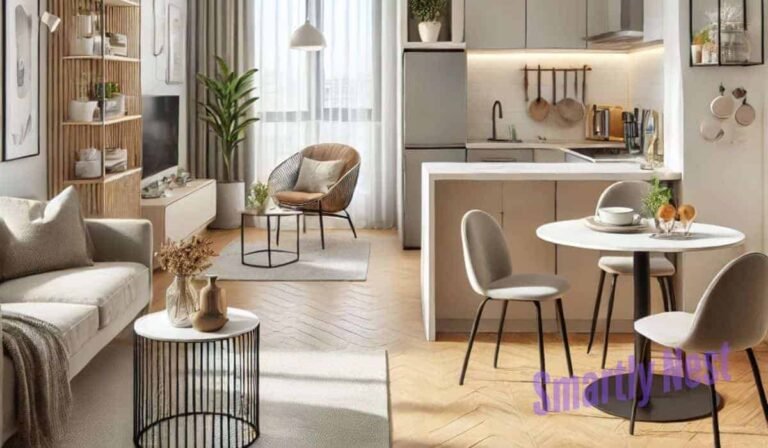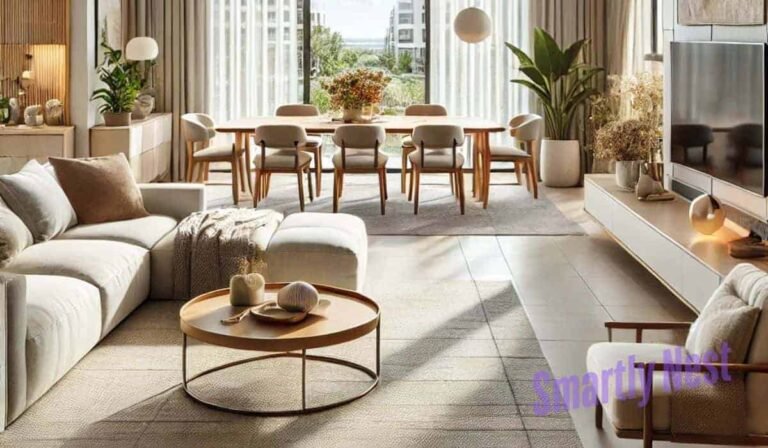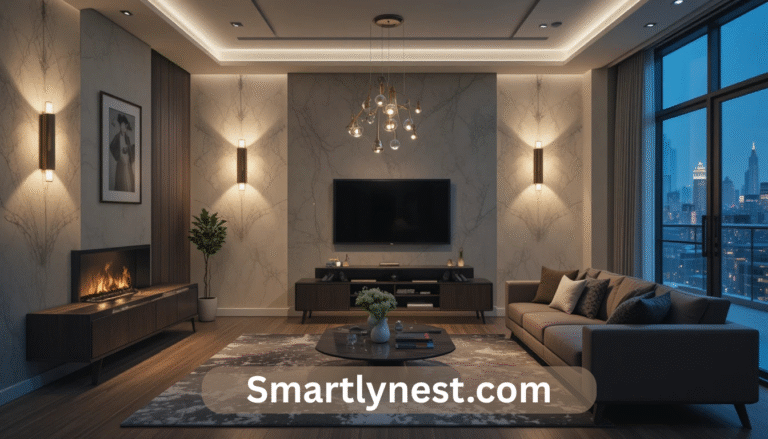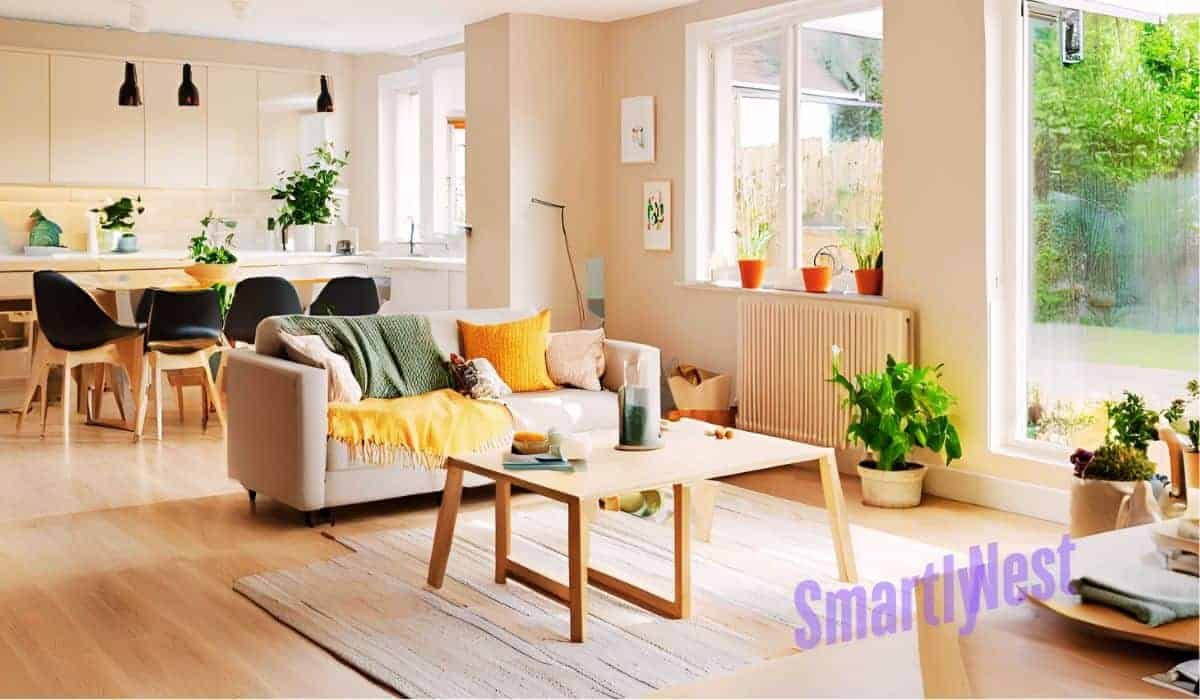
When it comes to designing small spaces, the challenge lies in creating a functional, stylish, and inviting atmosphere without making the room feel overcrowded. Small lounges and dining rooms are no exception—finding the right balance between comfort, aesthetics, and practicality can be a delicate task. But fear not! With the right ideas and a bit of creativity, even the smallest of spaces can be transformed into a haven that is both chic and functional.
In this comprehensive guide, we’ll explore 15 innovative ideas for small lounge and dining room spaces. Whether you’re living in a cozy apartment or working with a compact home, these ideas will help you maximize every inch of your space while maintaining style and comfort.
Understanding the Layout of Small Lounge and Dining Rooms
Space Planning and Functionality
One of the most crucial aspects of designing small lounge and dining rooms is effective space planning. With limited square footage, you need to think carefully about how each piece of furniture and every decorative element will function in the space. Creating distinct zones—one for lounging and another for dining—will help keep the space organized without it feeling cramped.
Tips for Space Planning:
- Define the Zones: Use rugs, furniture, or even changes in flooring to subtly separate your lounge and dining areas, even in an open-plan room.
- Consider Traffic Flow: Ensure that there’s a natural flow through the room. Avoid placing furniture in areas where it might block passageways, like between the lounge and dining spaces.
- Scale Down Furniture: Choose furniture that suits the room’s proportions. Oversized pieces will make the space feel smaller, so opt for slimmer profiles without sacrificing comfort.
Color Schemes that Open Up a Small Room
Color plays an essential role in the perception of space. Lighter colors generally make a room feel larger, while darker tones can make it feel cozier but potentially more confined.
Tips for Choosing Color Schemes:
- Light and Neutral Tones: Colors like white, light grey, and soft beige can make the room feel airy and expansive.
- Accent with Bold Colors: Use vibrant accent colors (like teal, mustard, or coral) in smaller decor items, such as throw pillows, rugs, or art.
- Monochrome Palettes: Stick to a similar color family throughout the room. This creates a unified look and eliminates visual clutter.
Mirrors and Reflective Surfaces
Another key strategy for visually expanding a small room is the strategic use of mirrors and reflective surfaces. Mirrors bounce light around the room, creating the illusion of more space.
How to Use Mirrors:
- Large Mirrors: Place a large mirror on one wall to open up the space. This can work wonders for small living rooms or dining rooms.
- Decorative Mirrored Furniture: Consider mirrored tables or cabinets, which not only reflect light but also add a touch of glam to the room.
15 Creative Small Lounge and Dining Room Ideas
1. Maximize Vertical Space with Shelving
When you’re working with limited floor space, it’s essential to look upwards. Wall-mounted shelves are a perfect solution for storing books, decorative items, or even functional essentials like drinks or kitchenware.
Benefits of Wall-Mounted Shelving:
- Keeps Floor Space Clear: Wall-mounted shelves save valuable floor space, making the room feel less cluttered.
- Adds Vertical Interest: Shelves can also act as a design element, adding visual height to the room.
Ideas for Shelving:
- Floating Shelves: Install floating shelves above the dining table or next to the sofa for an elegant and space-saving display.
- Corner Shelving Units: Utilize corners, which are often underused, to install shelves that help organize and display items.
2. Open-Concept Design
If you have a small space, an open-plan design is ideal for maximizing flow and natural light. By eliminating walls or partitions between the lounge and dining areas, you can create a sense of continuity that makes the room feel more expansive.
How to Make Open Concept Work:
- Use Rugs to Define Zones: In an open-concept room, use area rugs to demarcate the lounge and dining areas. A larger rug under the dining table and a separate one under the sofa will clearly define the two spaces.
- Keep It Light and Bright: Avoid dark walls or heavy furniture. Lighter colors, as well as streamlined furniture, help maintain the open feel of the space.
3. Minimalist Furniture Choices
Minimalism is particularly effective in small spaces. Clean lines, neutral colors, and simple designs not only look sleek but also help to reduce visual clutter, which is crucial in a limited space.
Minimalist Furniture Ideas:
- Sleek Sofas: Opt for low-profile, streamlined sofas with thin legs to create an airy look.
- Compact Dining Tables: Consider a round or oval dining table instead of a square or rectangular one. This allows for easier movement and prevents the room from feeling cramped.
4. Foldable and Multi-purpose Furniture
Multi-functional furniture is a lifesaver in small homes. A dining table that doubles as a work desk or a sofa with built-in storage will help keep your space organized and versatile.
Examples of Multi-purpose Furniture:
- Foldable Dining Tables: Choose a foldable dining table that can be expanded when guests come over and easily tucked away when not in use.
- Storage Ottomans: A sofa with a hidden compartment beneath the cushions can store blankets, pillows, or even entertainment equipment.
5. Use of Large-Scale Art to Create a Focal Point
In a small room, it’s crucial to create focal points that draw attention without overwhelming the space. A single large-scale piece of art or a statement mirror can serve as a stunning focal point.
Choosing the Right Art:
- Go Big: One large artwork is often more effective than several smaller pieces, as it gives the room a sense of purpose without cluttering the walls.
- Placement Tips: Hang the artwork above the sofa or on a blank wall between the lounge and dining areas to create visual interest.
6. Soft and Layered Lighting
Lighting is crucial in any space, but it’s especially important in small rooms. Layering different types of lighting—ambient, task, and accent—can make the room feel both cozy and spacious.
Lighting Ideas for Small Rooms:
- Ambient Lighting: Use soft overhead lights or recessed lighting to create a warm, inviting atmosphere.
- Task Lighting: Add task lighting near the dining area with pendant lights or table lamps for a focused glow.
- Accent Lighting: Incorporate accent lighting through wall sconces or floor lamps to highlight architectural features or artwork.
7. Custom-Built Solutions
If you’re looking to truly make the most of your small space, consider custom-built furniture or built-ins. These solutions can help you maximize storage, enhance the functionality of the room, and add a personal touch.
Benefits of Custom Furniture:
- Tailored Fit: Custom pieces can be made to fit your exact space requirements, ensuring that you’re utilizing every inch of the room.
- Seamless Integration: Built-ins can be integrated into the design, such as a dining nook with benches and storage or custom shelving units around a corner sofa.
8. Bold Accents for Contrast
While a neutral base palette works well for small spaces, adding a few bold accent pieces can bring life to the room. Think colorful cushions, striking artwork, or vibrant rugs.
How to Integrate Bold Accents:
- Accent Pillows and Throws: Use brightly colored or patterned throw pillows to add personality without overpowering the room.
- Statement Rugs: A bold patterned rug can anchor the space and tie together your lounge and dining areas.
9. Use of Transparent Furniture
Transparent furniture—like acrylic chairs or glass tables—works wonders in small spaces. Since they don’t visually take up much room, they allow the eye to move through the space without obstruction, giving the room an open, airy feel.
Transparent Furniture Ideas:
- Acrylic Chairs: Pair an acrylic chair with a dining table or use clear chairs in the lounge area to save space while maintaining style.
- Glass Coffee Tables: Opt for a glass coffee table, which allows light to pass through and gives the room a more spacious feel.
10. Corner Dining Solutions
Corners are often underutilized in small rooms, but they can offer an excellent opportunity for a compact dining setup. A corner dining solution saves space while maintaining functionality.
Corner Dining Ideas:
- Corner Dining Nooks: Install a corner bench with cushions and a small table to create a cozy dining nook that maximizes corner space.
- Foldable Tables: Choose a foldable or extendable dining table that can be tucked away when not in use, freeing up space for other activities.
11. Incorporating Natural Elements
Bringing natural elements into your decor can create a calming and inviting atmosphere. Plants, natural wood furniture, and earthy tones help add warmth and texture without overwhelming the space.
How to Add Natural Elements:
- Indoor Plants: A few potted plants, whether hanging or on the floor, can bring life to the room and make it feel fresher and more vibrant.
- Wooden Furniture: Choose light or reclaimed wood furniture to add a rustic touch without darkening the room.
12. Use of Multipurpose Storage
Storage is crucial in small spaces, and using furniture with hidden storage options helps keep the room tidy. Look for pieces that pull double duty.
Storage Solutions:
- Storage Ottomans and Benches: These pieces offer hidden compartments for storing blankets, cushions, or even dining table linens.
- Floating Shelves and Wall-Mounted Cabinets: Floating shelves or wall-mounted cabinets can free up valuable floor space while providing much-needed storage for books, décor, and everyday items.
- Multi-purpose Side Tables: Choose side tables with storage features, like drawers or hidden compartments, to store remote controls, coasters, or other small items that can clutter up a small space.
13. Mirrors and Reflective Surfaces
Mirrors are one of the oldest tricks in the book when it comes to visually expanding a small room. Reflective surfaces can make the room feel larger by bouncing light around the space and giving the illusion of more depth.
How to Use Mirrors Effectively:
- Large Mirrors: Install a large mirror on one wall, either above the sofa or next to the dining area. This not only makes the room feel bigger but also reflects natural light, brightening up the space.
- Mirrored Furniture: Incorporating furniture with reflective surfaces, like a glass coffee table or a mirrored sideboard, can help keep the space feeling airy and open.
- Strategic Placement: Place mirrors across from windows or other sources of light to amplify natural daylight and create the illusion of a brighter, more spacious room.
14. Scandinavian-Inspired Design
Scandinavian design is renowned for its simplicity, functionality, and lightness—qualities that make it perfect for small lounge and dining rooms. The Scandinavian aesthetic is all about creating an open, airy, and functional space with clean lines and minimal clutter.
Key Features of Scandinavian Design:
- Neutral Color Palette: Stick to whites, soft greys, and pastels as your base colors. These tones reflect light and make the space feel open.
- Natural Materials: Incorporate wood elements, such as light wooden floors or furniture, to add warmth and texture.
- Functional Furniture: Choose pieces that are both practical and stylish. Think of low-profile sofas, functional dining chairs, and tables with clean, minimal lines.
How to Achieve a Scandinavian Look:
- Mixing Textures: Layer different textures such as wool, linen, and leather to add comfort without clutter.
- Simple Décor: Keep décor to a minimum. Opt for a few well-chosen accessories like simple ceramics, a woven rug, or a small plant to enhance the space without overwhelming it.
15. Layered Textures and Cozy Fabrics
In a small lounge and dining room, you want to create a cozy, inviting atmosphere without making the space feel cluttered. Using layered textures and soft fabrics will help to do just that, adding warmth and comfort without sacrificing style.
How to Layer Textures:
- Cushions and Throws: Add texture with soft, plush cushions and throws in varied fabrics, such as velvet, linen, or wool. This makes the space feel cozy and lived-in.
- Textured Rugs: A plush rug in the lounge area or beneath the dining table can add warmth and depth to the room. Opt for materials like wool or jute for a natural feel.
- Curtains and Upholstery: Soft curtains or blinds can soften hard lines in the room. Likewise, upholstered furniture with a tactile quality, like a velvet sofa or linen chairs, can make the space feel more inviting.
Essential Design Tips for Small Lounge & Dining Rooms
Maximizing Natural Light
Natural light has a significant impact on how spacious and comfortable a room feels. In a small space, it’s essential to make the most of any natural light available.
Tips for Maximizing Light:
- Light-Colored Walls and Furniture: Lighter tones reflect light better than dark colors, so paint the walls in soft whites, light greys, or pastels. Opt for lighter furniture too, which helps to amplify the effect.
- Window Treatments: Use sheer curtains or blinds that allow light to filter through while providing privacy. If you’re lucky enough to have large windows, avoid heavy drapes that can block light.
- Mirrors: As mentioned earlier, mirrors are excellent at reflecting light. Placing a mirror opposite a window can help bounce the light around the room.
The Power of Multi-Functional Zones
In a small room, you want to make sure every square inch counts. Creating multi-functional zones can help you maximize the utility of your space, ensuring that your lounge area serves as both a place for relaxation and a functional area for dining or working.
How to Create Multi-Functional Zones:
- Furniture Arrangement: In an open-plan room, place the lounge area on one side and the dining area on the other, using rugs or furniture as dividers. This allows you to maintain a sense of openness while still creating designated spaces.
- Versatile Furniture: Invest in furniture that can serve more than one purpose. For example, choose a dining table that doubles as a workspace or a sofa that has storage underneath.
Writer’s Opinion Section
Personal Thoughts on Small Spaces:
Designing small spaces can be both challenging and rewarding. While it requires careful planning, the creative solutions you come up with often lead to some of the most innovative and functional home designs. What I love about small lounges and dining rooms is the opportunity to be more intentional with every piece of furniture, color choice, and decorative element. Every decision becomes more important, and that’s where the magic happens.
Balancing Style with Function:
It’s easy to assume that style and function are mutually exclusive, especially when working with small spaces. However, that’s far from the case. In fact, the more intentional you are with your choices, the more you can blend both. A simple, minimalist design allows for functional, multi-purpose furniture that still looks great. A bold accent color on a statement chair or a piece of artwork can give your small space an injection of personality without overloading it.
Top Picks for Essential Small Room Items:
When decorating a small lounge and dining room, here are my top picks:
- Compact Dining Tables: A round table or one with folding leaves is perfect for small spaces, offering flexibility when you have guests.
- Modular Sofas: Modular seating allows you to adapt the layout depending on the occasion.
- Floating Shelves: These are great for maximizing wall space without taking up floor space.
- Accent Lighting: A combination of task lighting and ambient lighting can set the right mood while being functional.
Frequently Asked Questions (FAQ)
What are the best colors for a small lounge and dining room?
Light and neutral tones, such as whites, light grays, and soft beige, are the best choices for small spaces. These colors reflect light and make a room feel more open. You can add pops of color through accent pieces, such as pillows, rugs, and artwork.
How do I create separate zones in a small open-plan space?
Use rugs, furniture placement, and lighting to define separate areas. For example, place an area rug under the dining table to separate the dining space from the lounge area. You can also use lighting fixtures like pendant lights or floor lamps to demarcate zones.
How can I make my small lounge and dining room feel bigger?
To make your space feel bigger, use light colors, incorporate mirrors to reflect light, and opt for furniture with a small footprint. Avoid overcrowding the room with too many pieces, and keep the decor simple and uncluttered.
What type of furniture should I avoid in a small space?
Avoid bulky, oversized furniture that can dominate the room and obstruct traffic flow. Opt for pieces with a slim profile, such as lightweight chairs and a compact sofa. Avoid heavy, dark wood furniture that can make the space feel cramped.
Can I use dark colors in a small room?
While dark colors can make a room feel cozier, they can also make it appear smaller if not used carefully. If you want to incorporate dark tones, balance them with light furniture, lots of natural light, and reflective surfaces to maintain a sense of space.
What are some quick tricks to organize a small dining room?
Use multi-purpose furniture, like dining benches with storage or a dining table with built-in drawers. Keep the tabletop clear of clutter and use floating shelves or cabinets for extra storage.
Conclusion
Transforming a small lounge and dining room into a stylish, functional space doesn’t require a huge budget or radical redesign. By carefully selecting the right furniture, colors, and design elements, you can create a room that feels bigger, more comfortable, and tailored to your needs. Whether you’re working with a small apartment or just have a compact area in your home, these 15 ideas can help you maximize every inch and bring your vision to life.
Remember, small spaces aren’t limitations—they’re opportunities for creativity and efficiency. Embrace the challenge, and watch your small lounge and dining room transform into a space that is both beautiful and functional.

